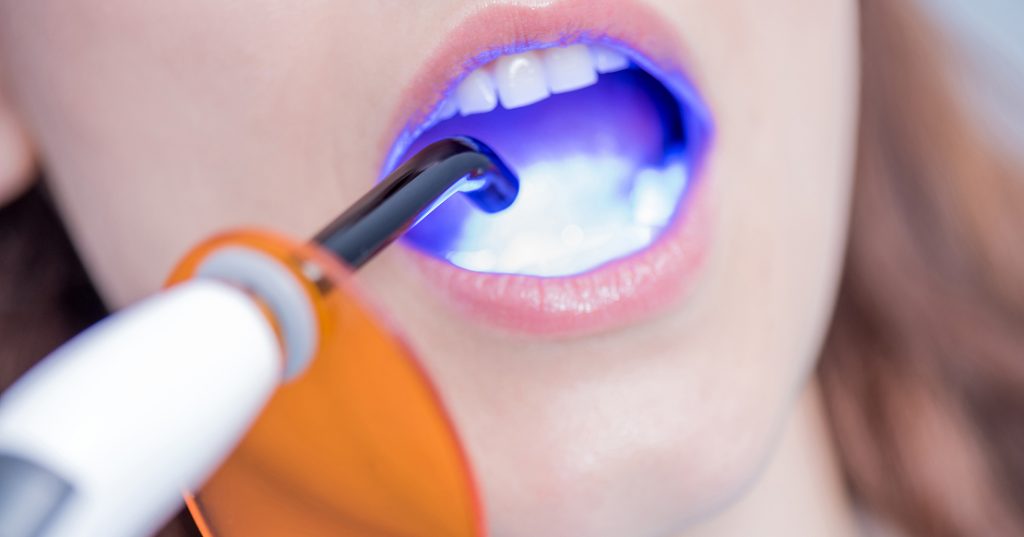Options for Treating Excess Overjet

The treatment for excess overjet must consider several factors in addition to identifying the original etiology that caused the problem. It’s also important to realize that in many patients, the excess overjet actually presents as a deep overbite from over eruption of the anterior teeth with minimal overjet.
In these patients, a special challenge exists: If the anterior teeth are repositioned to correct the overeruption, an anterior open bite will likely result, displaying the excess overjet that led to the overeruption.
No treatment: When the excess overjet is not accompanied by any symptoms with regards to the TMJs, muscles, or teeth, the patient may choose no treatment. This is especially true in adult patients who have demonstrated that the excess overjet has been well-tolerated.
Treating excess overjet with orthodontics
In some patients, the excess overjet is not from a skeletal problem or missing teeth, but rather misaligned or mispositioned anterior teeth. In these patients, orthodontics alone is the ideal choice.
Orthodontics and selective extraction

A frequent option for the correction of excess overjet is to shorten the maxillary arch by removing the maxillary first premolars and retracting the maxillary anterior teeth. This can be used when the patient has a mandibular deficiency or when the patient has a short mandibular arch from missing mandibular teeth.
This approach has several potential negative consequences, including the creation of an unattractive facial profile and smile from the maxillary anterior retraction or the inability to create an acceptable anterior occlusal elationship (depending upon the patient’s skeletal relationship). Having said that, for many patients — especially those whose facial profile would have benefited from premolar extraction — this option can be a very good choice.
Orthodontics and tooth replacement
Excess overjet is typically due to either a skeletal problem from a mandibular deficiency or a short mandibular arch from missing mandibular teeth, such as second premolars. Instead of removing maxillary teeth and retracting the maxillary anterior teeth, this approach uses orthodontics to open the spaces where the missing teeth should have been. This has the effect of lengthening the mandibular arch to eliminate the excess overjet while leaving the maxillary teeth in an ideal position. Today, the missing mandibular teeth would then commonly be replaced with implants.
Orthodontics and orthognathic surgery
For patients whose excess overjet is due to a deficiency in mandibular development, this option is often the ideal choice. The orthodontist will position the maxillary teeth ideally for the best esthetics. The surgeon will then advance the mandible to an ideal anterior occlusal relationship. Finally, the orthodontist will correct and refine the occlusion. For many patients with a Class II skeletal relationship that is responsible for their excess overjet, this provides the most ideal occlusal and esthetic result.
Even though the therapies above are ideal, many patients are unwilling to go through having braces and surgery.
Treating excess overjet by building a dual bite
This approach is unusual but can be very effective for patients who won’t agree to an orthodontic and surgical correction. This involves creating two different intercuspal positions the patient can comfortably slide between.
The first occlusion is designed with the mandible in a retruded position to have even contact on as many teeth as possible — but not the anteriors, due to the excess overjet. This occlusion is also designed to have guidance in left and right excursive movements on the most anterior teeth that touch in the retruded position, typically the first or second premolars.
The other intercuspal position exists in a more anterior mandibular position, where anterior tooth contact can be achieved. In this position, all the anterior and posterior teeth are in contact, but when the patient moves left, right, or forward, the anterior teeth provide guidance separating the posterior teeth. The key to this treatment is to create a smooth, balanced slide from the more retruded position to the more anterior position.
Although it sounds complicated to achieve, this approach can be well-managed if an articulator is used, which allows accurate recording and repositioning of the mounted models to the desired positions and in between. This approach does often involve the restoration of a significant number of maxillary teeth and also results in fairly flat posterior tooth form.
SPEAR STUDY CLUB
Join a Club and Unite with
Like-Minded Peers
In virtual meetings or in-person, Study Club encourages collaboration on exclusive, real-world cases supported by curriculum from the industry leader in dental CE. Find the club closest to you today!

By: Frank Spear
Date: November 30, 2017
Featured Digest articles
Insights and advice from Spear Faculty and industry experts


